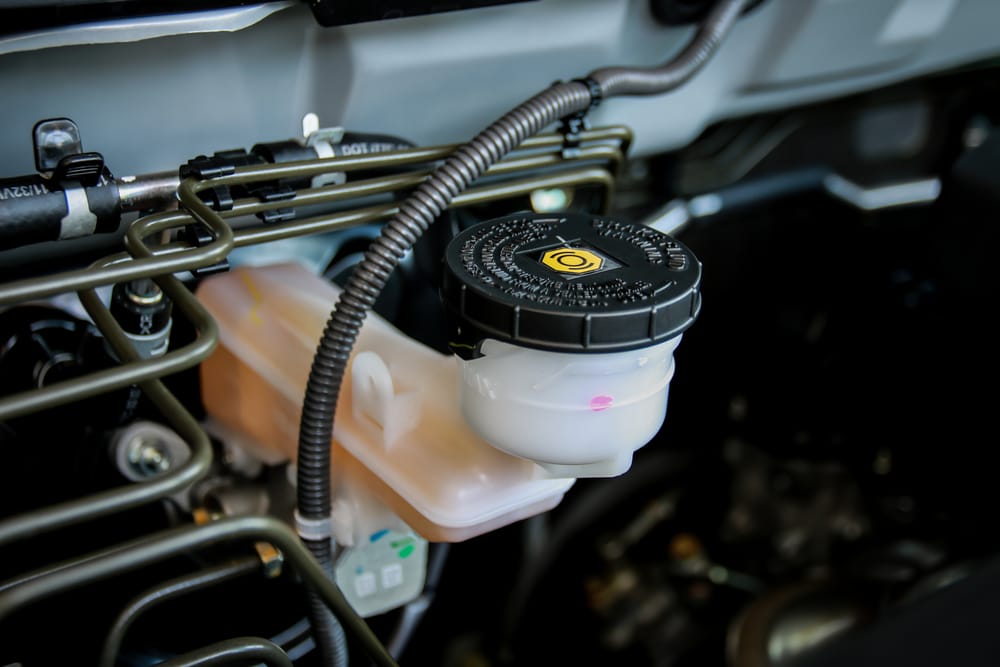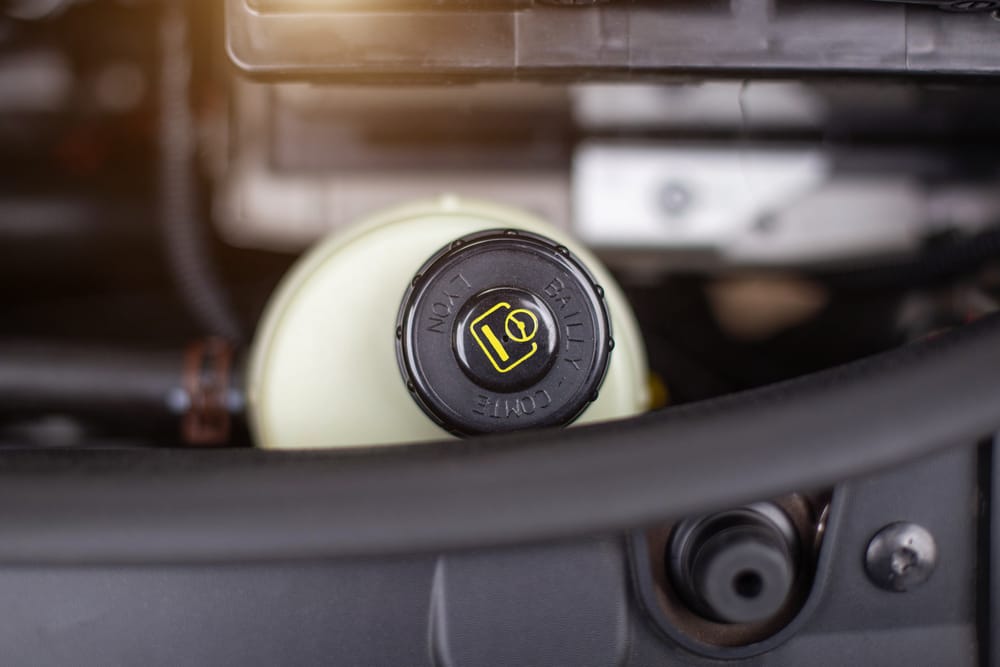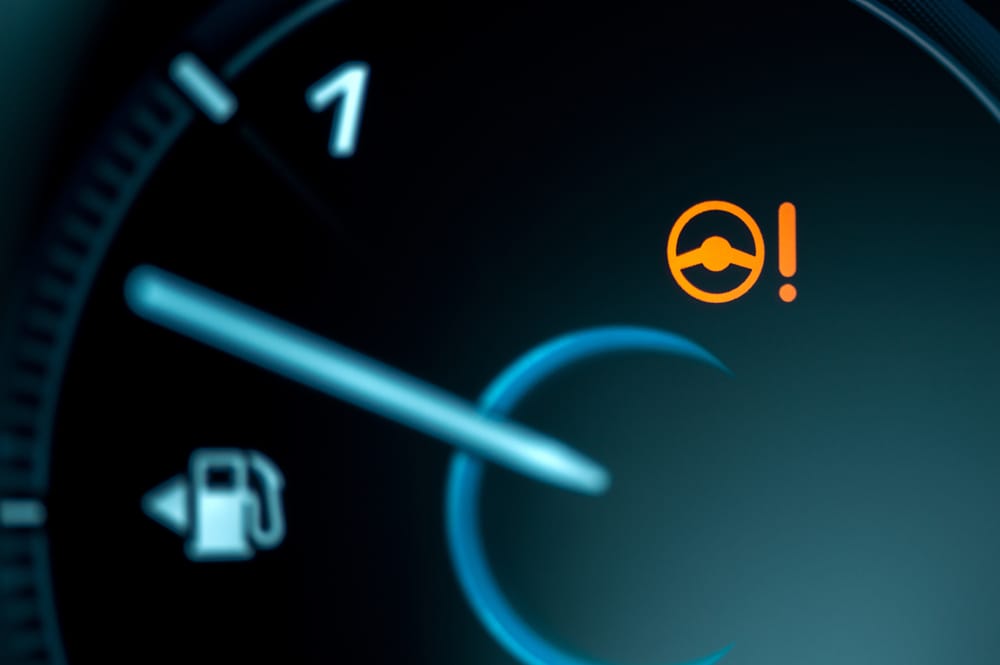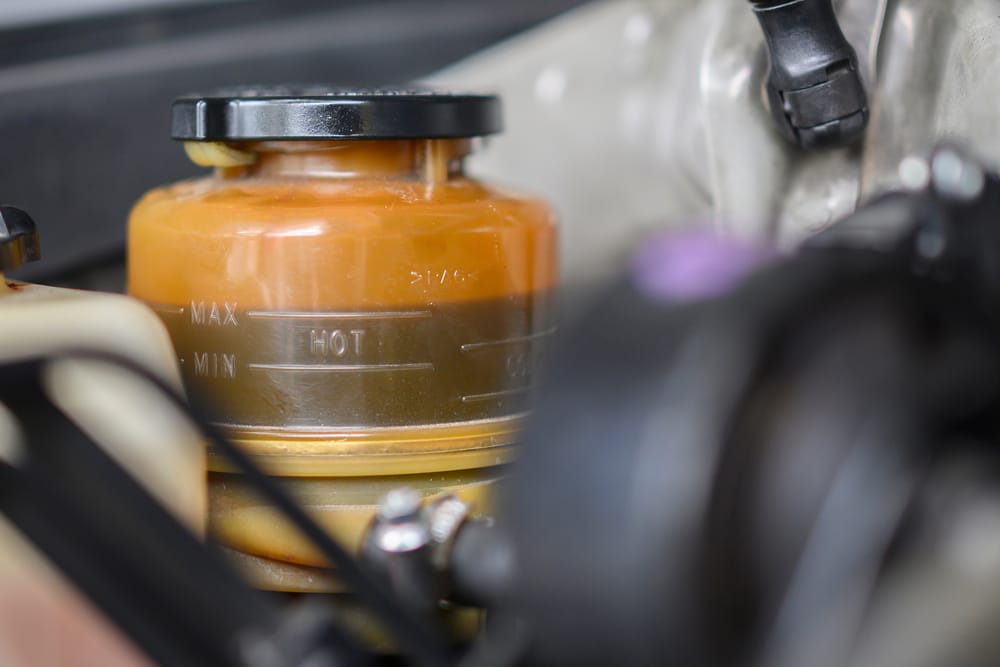The power steering system is an essential part of any modern car. The
system runs on power steering fluid, which can run out over time.
The power steering reservoir is under the hood of your car. You can
usually find it on the passenger side; however, some vehicles have
their power steering reservoir on the driver's side. The container will
be white or yellow with a black cap, and the words "power steering" or
"steering fluid" will be printed on the cap.
Once you find the power steering fluid reservoir, you can fill it up with
power steering fluid if needed. Occasionally, you'll need to do a power
steering flush when you change the power steering fluid.
 The power steering reservoir is located in the engine bay.
The power steering reservoir is located in the engine bay.
Where Is My Power Steering Fluid Reservoir?
If your steering is becoming stiffer and the wheel is more difficult to
turn, you may need to add power steering fluid to the reservoir or change
the fluid if it has become contaminated with dirt and oil.
In the engine bay, you can find the power steering reservoir on either the
passenger or driver's sides.
The container is usually white or yellow, with a black cap with the words
"power steering" or "steering fluid" printed on the top.
 The power steering reservoir is denoted by a steering wheel symbol.
The power steering reservoir is denoted by a steering wheel symbol.
Every car is different, so if you're unsure how to find your power steering
reservoir, check your car's owner's manual for a clear guide on your
specific make and model.
Power Steering Fluid Symbol
Your car's dashboard will warn you if there is a problem with the power
steering system. For instance, if you have low-power steering fluid, a
warning light will illuminate to let you know.
The power steering fluid symbol is a circle that looks like a steering
wheel.
In most cars, this warning light will glow orange to ensure it is visible
to the driver.
 The power steering light may go off if the fluid level is low.
The power steering light may go off if the fluid level is low.
If the power steering light goes on in your car, you must check your power
steering system out as soon as possible.
What Does Power Steering Fluid Do?
If a car only had mechanical steering, it would be extremely tiring to
steer because the driver would be responsible for providing the necessary
power to turn the vehicle's wheel.
Power steering systems leverage the power of hydraulics to power turn the
wheels, leaving the driver to easily indicate, without exerting themselves,
the vehicle's desired direction with the steering wheel.
One of the main components of a hydraulic power steering system is the
power steering fluid, without which the system won't function.
Can I Just Add Power Steering Fluid?
If your car's power steering is hydraulic, you can add the power steering
fluid yourself. All you need to do is pour it into the reservoir.
However, if your power steering fluid is running low, you should take your
car in for a thorough inspection, as there could be a leak somewhere in the
system.
Power steering systems are usually sealed, meaning the fluid should always
remain in the system and not "run out."
How Much Power Steering Fluid Do I Need?
Refilling the power steering fluid is an easy task.
Make sure to pour the fluid in small increments to not go over the "MAX"
indicator. Your power steering fluid level should be between the "MIN" and
the "MAX" lines.
 The power steering reservoir has min and max levels to denote the proper fluid level.
The power steering reservoir has min and max levels to denote the proper fluid level.
How Do I Add Power Steering Fluid To My Car?
You can add power steering fluid to your car in six steps:
-
Check the owner's manual to confirm the power steering reservoir's
location and the required spec of power steering fluid.
-
Open the power steering fluid reservoir in the engine bay.
-
Check the power steering fluid level.
-
Make sure to add the fluid in small increments to stay underneath the
"MAX" line.
-
Close the reservoir.
How Do I Know If My Power Steering Fluid Level Is Low?
There are a few different ways that you can tell if your car is running low
on power steering fluid. You may notice a few of the following symptoms:
-
It's difficult to turn the steering wheel: several factors can cause
the steering wheel to become stiffer and tougher to turn, but the
leading cause is often low power steering fluid.
-
You hear a noise when you turn the steering wheel: if the steering
wheel is making a whining noise whenever you turn it, your car is
likely running low on power steering fluid.
-
Difficulty turning: if your car's power steering system is running low
on fluid, you may find that the vehicle has a wider turning circle.
That's because the power steering affects how the front wheels turn,
even when you turn the steering wheel at full lock.
-
Check for leaks or spills underneath the car: it's never a good sign to
see any fluid underneath your vehicle. It could very well be power
steering fluid.
-
Check power steering fluid level: the easiest way to tell if your car
needs more power steering fluid is by simply checking the reservoir.
You must top up the fluid if it is lower than the "MIN" sign.
-
Steering wheel warning light: your dashboard will illuminate with a
steering wheel icon if there is a problem with the power steering
system. This can include your power steering fluid running low.
What Causes Low Power Steering Fluid?
Power steering systems are sealed, meaning the fluid inside is not "used
up" (it's not a consumable fluid). Therefore, a leak is the leading cause
of a low power steering fluid level.
Like other parts of your vehicle, the power steering system will degrade
over time, leading to malfunctioning seals and leaky hoses.
Alternatively, although unlikely, a mechanic could have flushed the system
and not put enough fluid back in when topping it up.
How Long Can You Drive With Low Power Steering Fluid?
It's not recommended to drive your car for extended lengths of time with
low power steering fluid as it can cause damage to the system that is
costly to repair.
With a low power steering level, the power steering motor won't receive
sufficient lubrication and cooling and will wear out fast.
Also, seals and gaskets will dry out, leading to leaks.
If you have a power steering leak, make sure to add fluid regularly to
maintain the proper fluid level until you can repair the leak.
What Does Power Steering Fluid Look Like?
New power steering fluid should be slightly clear with a pink, red, or
amber tint.
It all depends on the synthetic power steering fluid your make and model of
the car uses.
 New power steering fluid is clear and translucent.
New power steering fluid is clear and translucent.
Check your vehicle's owner's manual to find your make and model's
recommended power steering fluid.
If the fluid is dark brown, black, or foamy, it means it has been
contaminated and should be changed.
You can do this through a power steering flush. Although you could do it
yourself, it's highly recommended to take your car to a mechanic for this
process to ensure you get all of the old power steering fluid out.
Conclusion
This article has brought you some clarification on where the power steering
reservoir is.
The power steering reservoir is located in the engine bay, usually on the
car's passenger side but sometimes on the driver's side.
It can be identified as a white or yellow container with a black reservoir
cap. You'll also notice the words "power steering" on the reservoir.
From time to time, you may need to replace the old power steering fluid and
refill the reservoir.